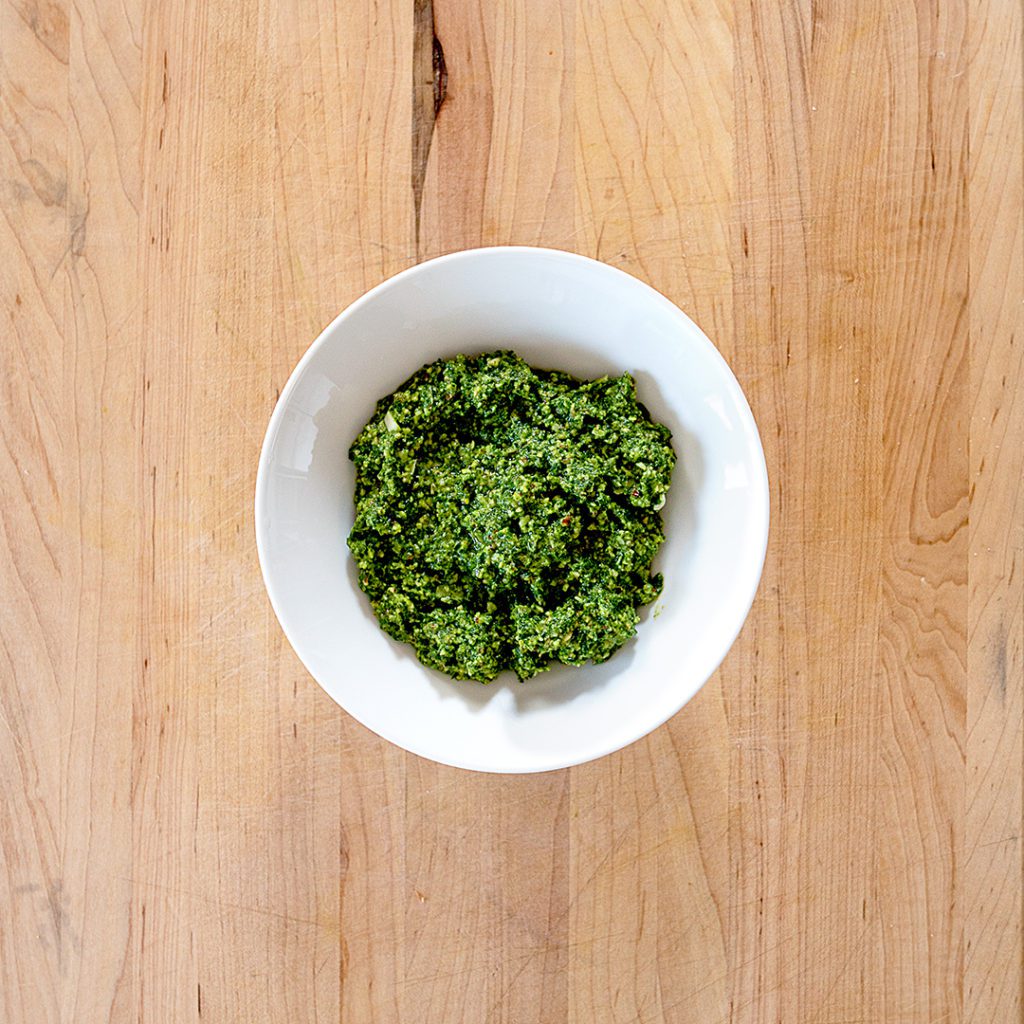
Whether you’re swirling it into pasta, spreading it on sandwiches, or spooning it over roasted veggies, pesto is a fast, flavorful way to upgrade any meal. This classic Italian sauce is known for its fresh, herby punch—but there’s more to pesto than just basil and pine nuts.

In this guide, we’ll break down everything you need to know: what is pesto, how to make pesto sauce (with or without a recipe), how it compares to similar sauces like chimichurri and gremolata, and how to store and use every last spoonful.
What Is Pesto?
Pesto originated in Genoa, Italy, and traditionally consists of fresh basil, garlic, pine nuts, Parmesan cheese, and olive oil—blended into a vibrant, aromatic sauce. The word “pesto” comes from pestare, meaning “to pound” or “crush,” which refers to how it was originally made with a mortar and pestle.
Want to get technical? Pesto is a raw herb-based sauce, which sets it apart from cooked sauces like tomato sauce or creamy ones like Alfredo sauce.
Keep reading: 3 (Fresh) Ways to Use Fresh Herbs
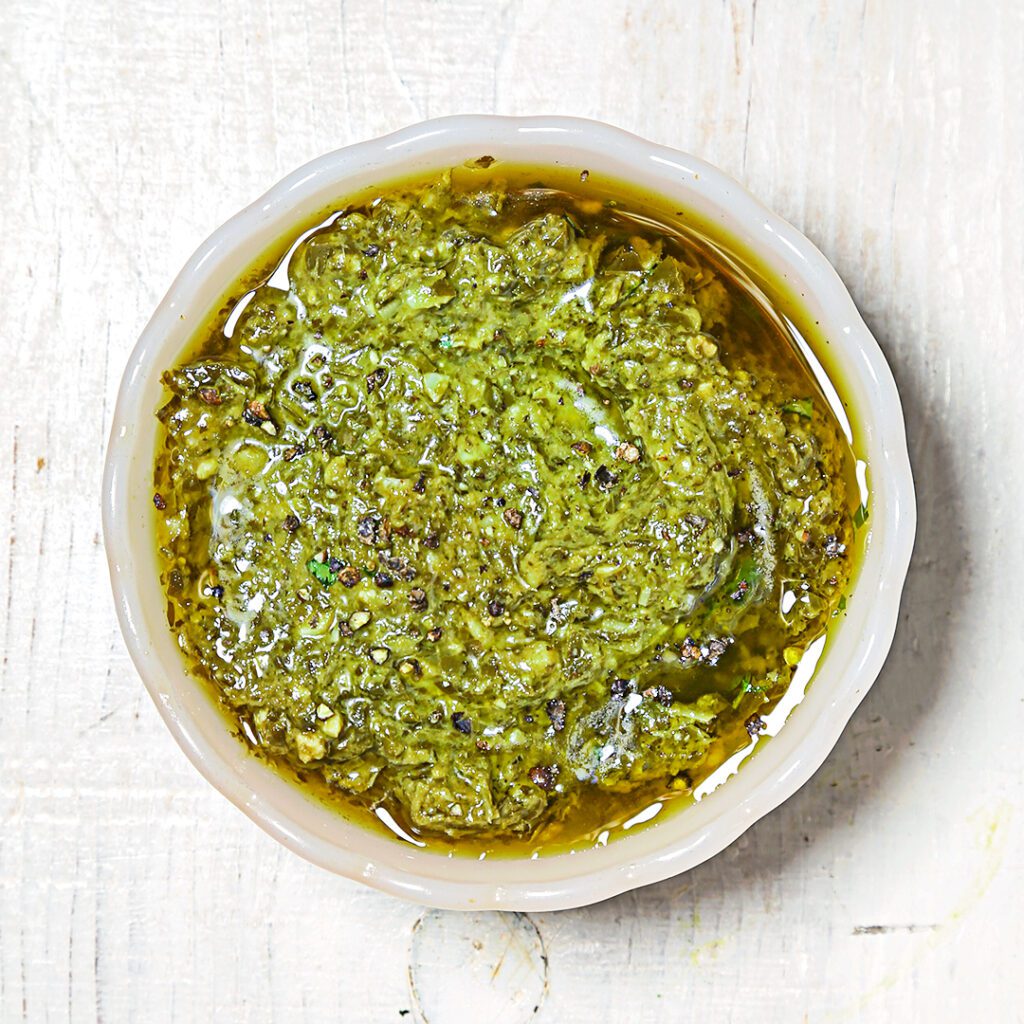
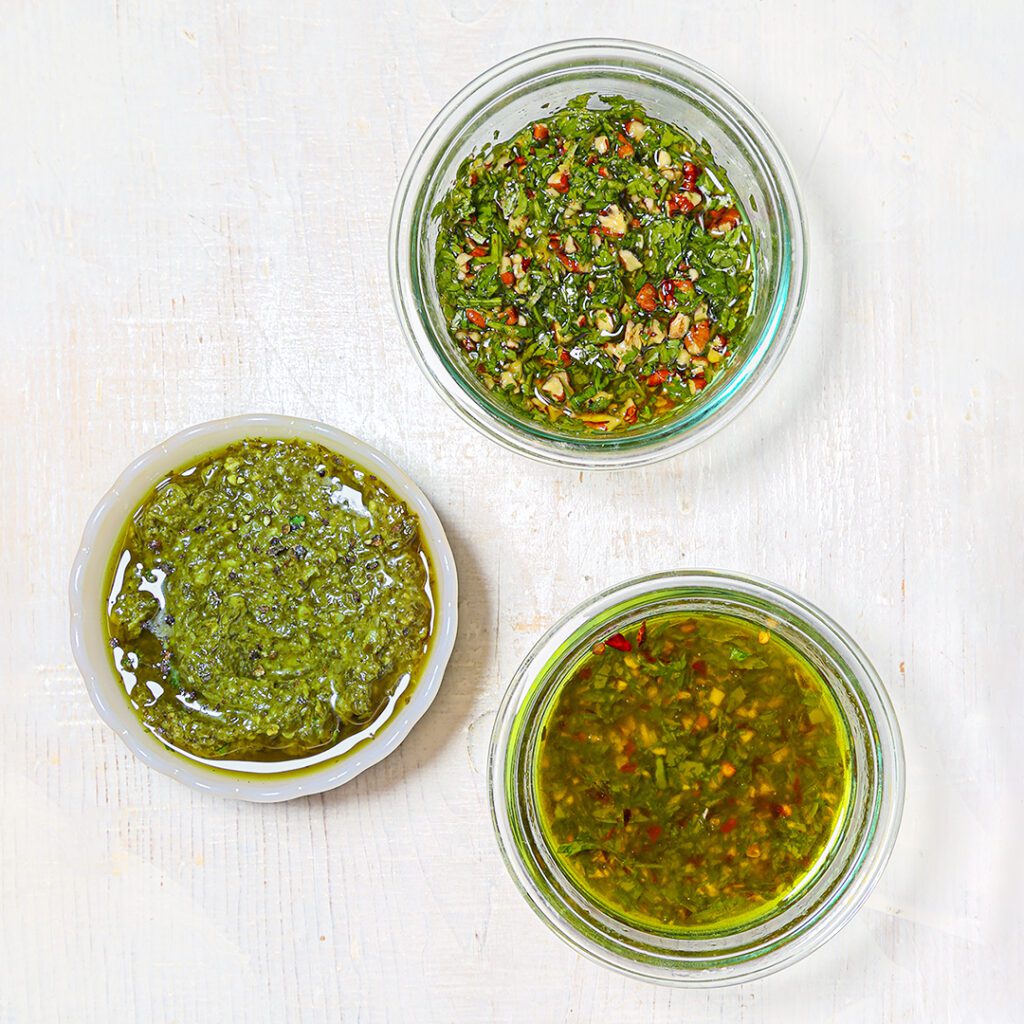
Pesto vs. Chimichurri vs. Gremolata: What’s the Difference?
If you’re wondering how pesto stacks up against similar green sauces, we’ve got you:
- Pesto vs. Chimichurri: Chimichurri is chunkier, more vinegar-forward, and doesn’t include nuts or cheese.
- Pesto vs. Gremolata: Gremolata is even simpler: just chopped herbs (usually parsley), lemon zest, and garlic—no oil, no nuts.
How to Make Pesto
Making pesto doesn’t get easier than this. Follow this classic Bobby Flay pesto recipe or use the formula below to customize your own:
Build-Your-Own Pesto Formula
Pick your pesto ingredients and blend until smooth:
- Greens: basil, arugula, kale, spinach, parsley, carrot tops
- Nuts/seeds: pine nuts, walnuts, pistachios, sunflower seeds
- Cheese (or not): Parmesan, pecorino, nutritional yeast
- Oil: olive oil
- Acid: lemon juice, vinegar
- Add-ons: garlic, chili flakes, lemon zest, miso, roasted peppers
There are many delicious alternatives to the classic basil pesto. Get creative with what you have—and check out our no-waste pesto tips.
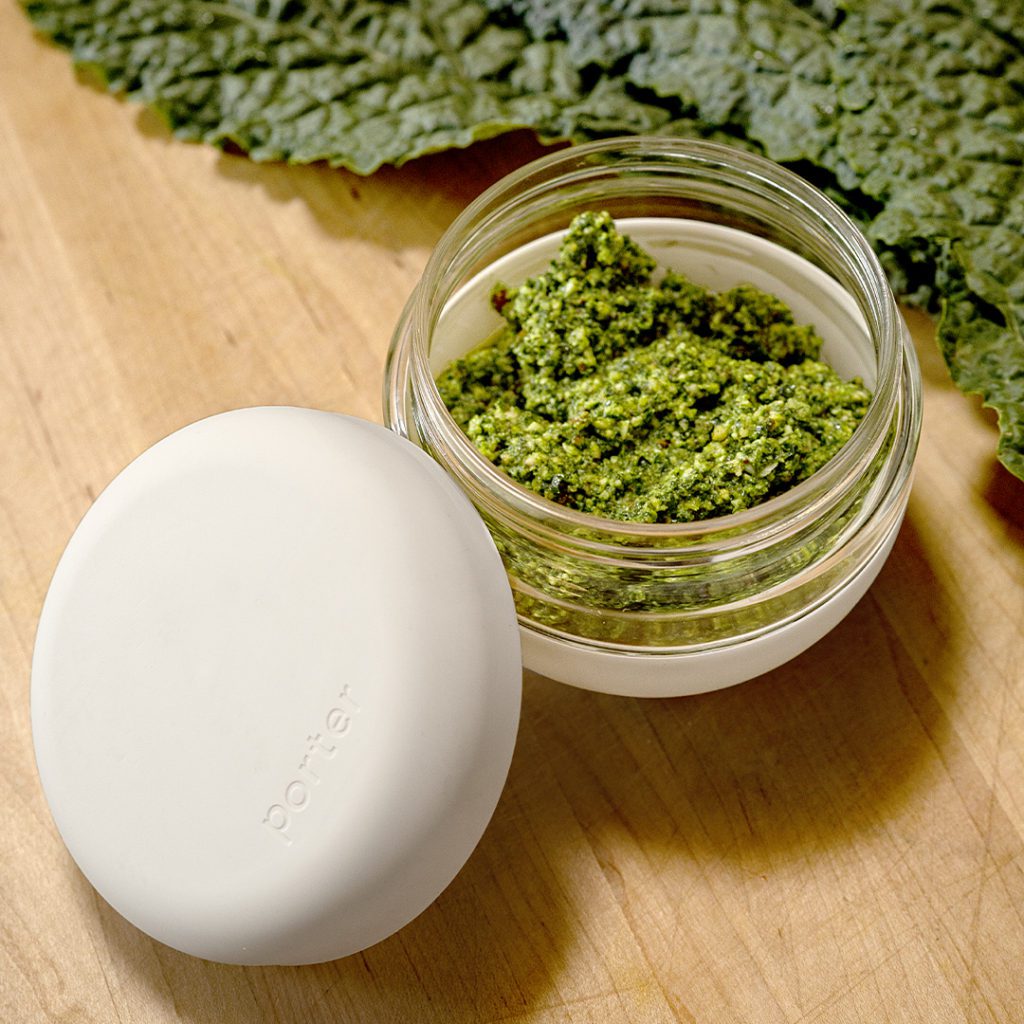
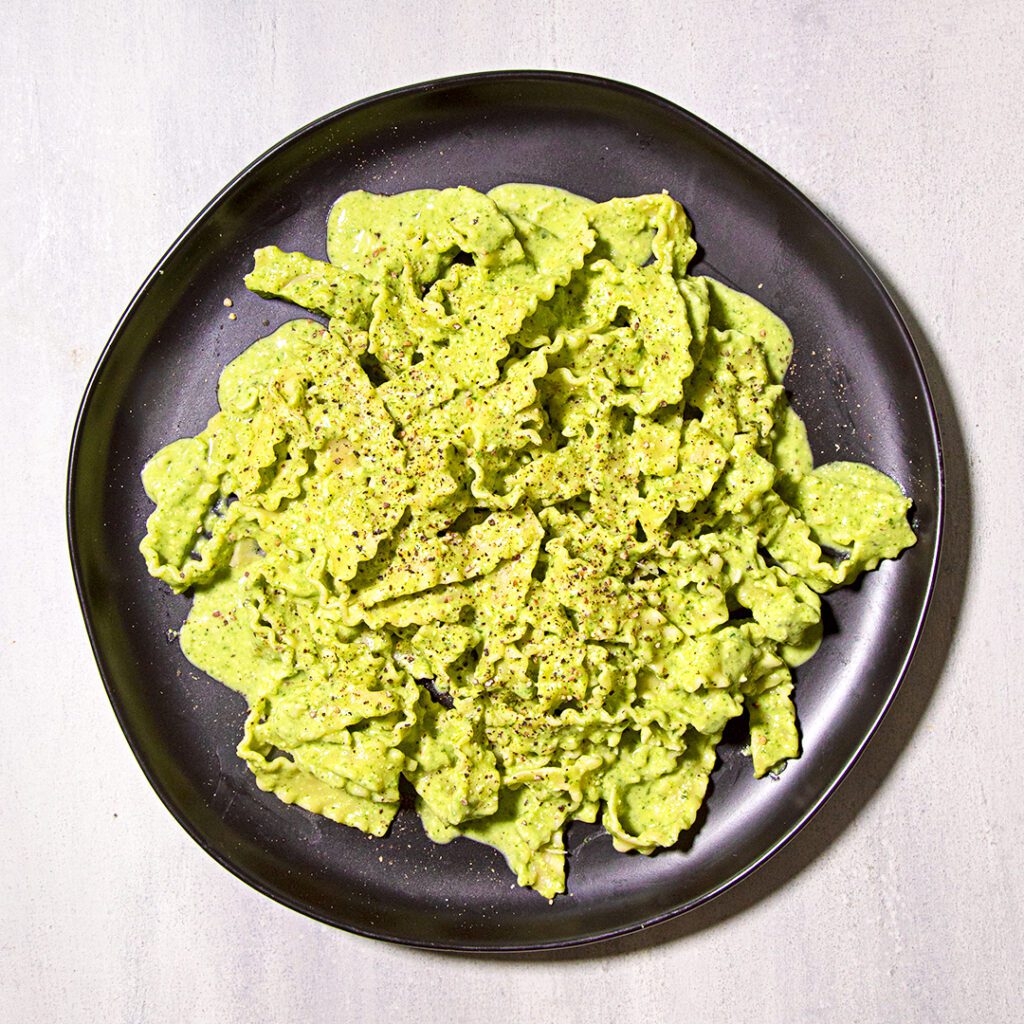
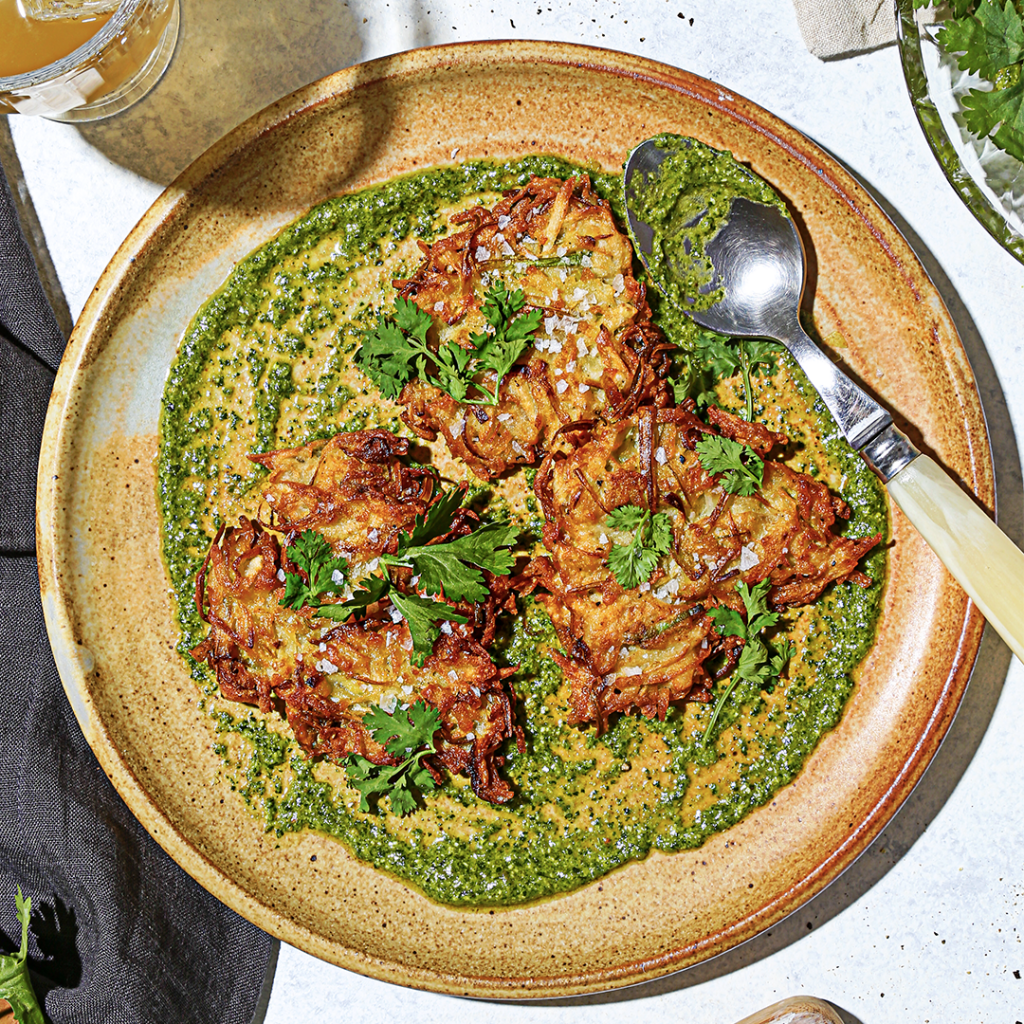
How to Make a No-Waste Pesto
The best part about pesto? It’s one of the most forgiving sauces around.
- Use wilting herbs or greens
- Sub in pantry nuts or seeds
- Toss in edible stems like kale or carrot tops
- Freeze leftover pesto in ice cube trays for future dinners
How to Store Pesto
- In the fridge: Store in an airtight container for 5–7 days. To prevent browning, pour a thin layer of olive oil on top.
- In the freezer: Can you freeze pesto? Yes! Freeze pesto in silicone trays, small jars, or resealable bags. Great for portioning out later.
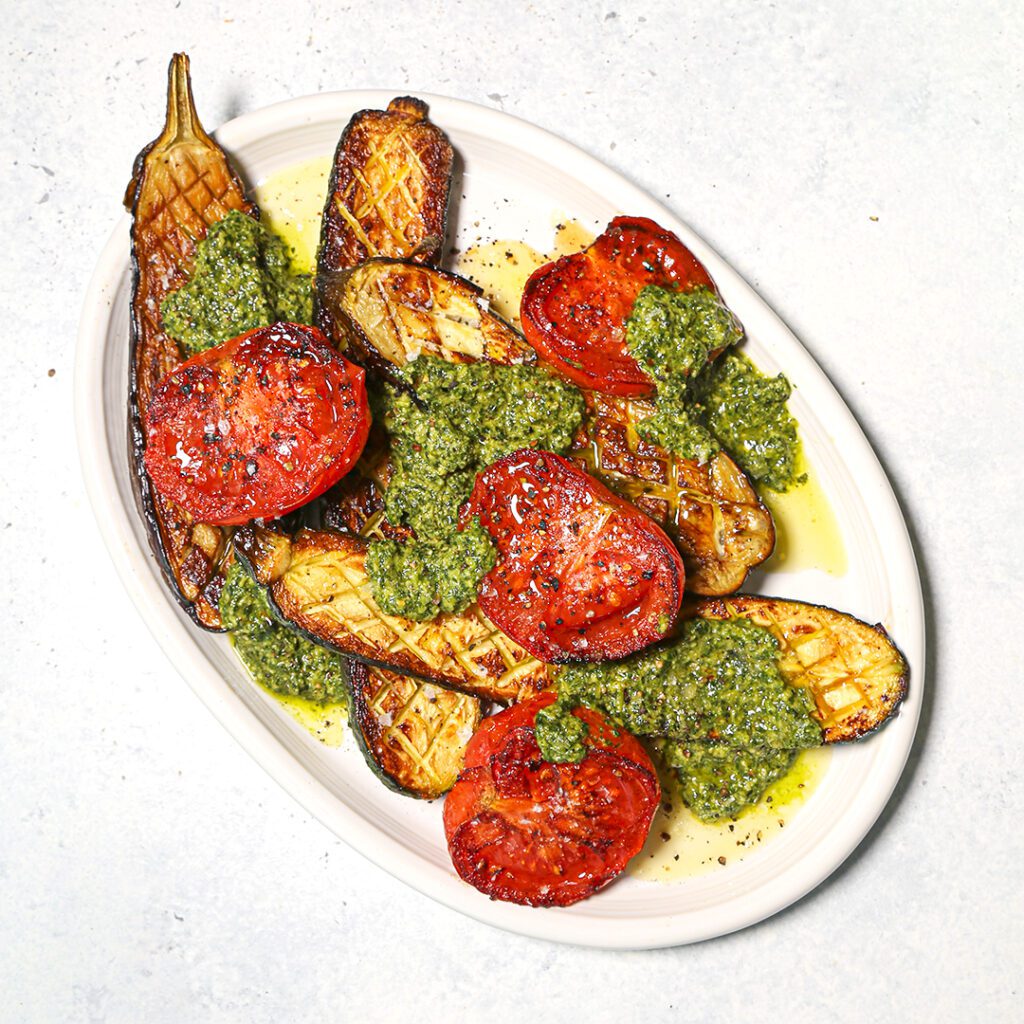
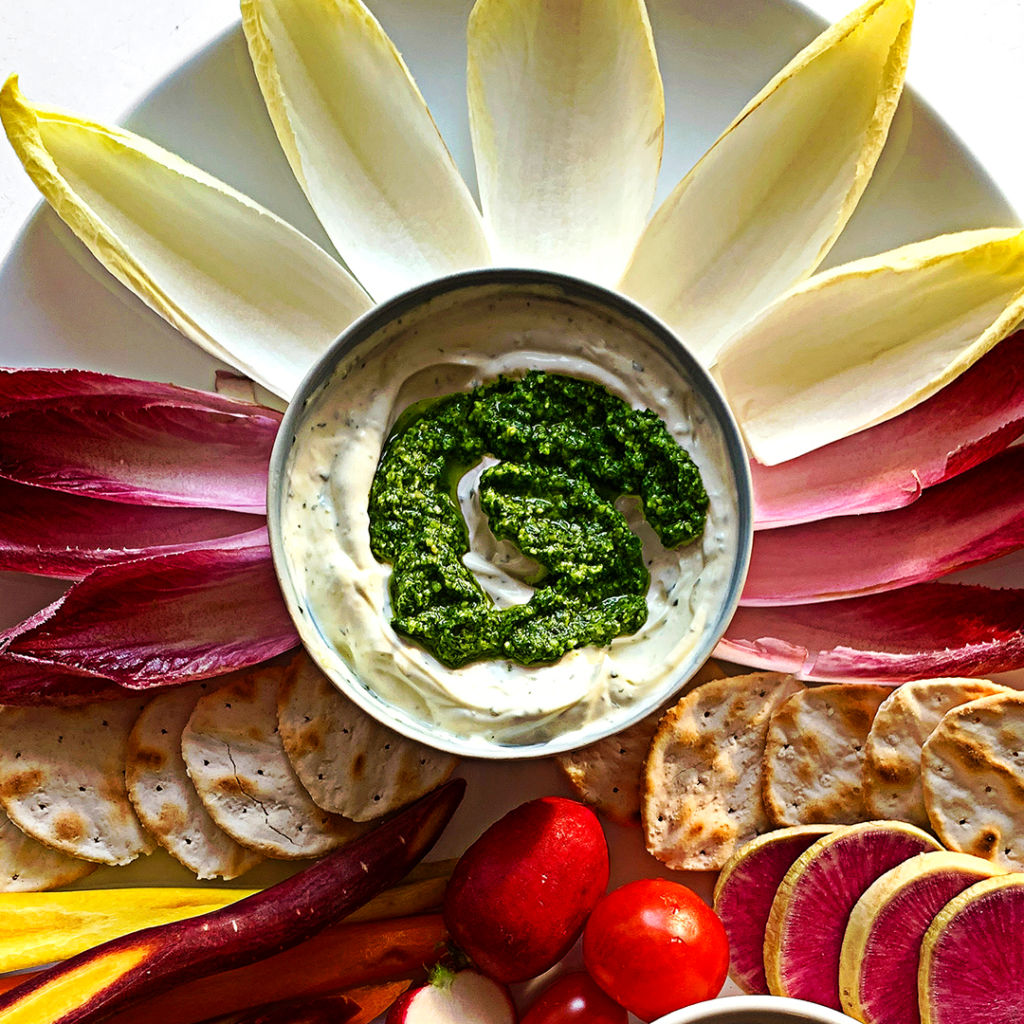
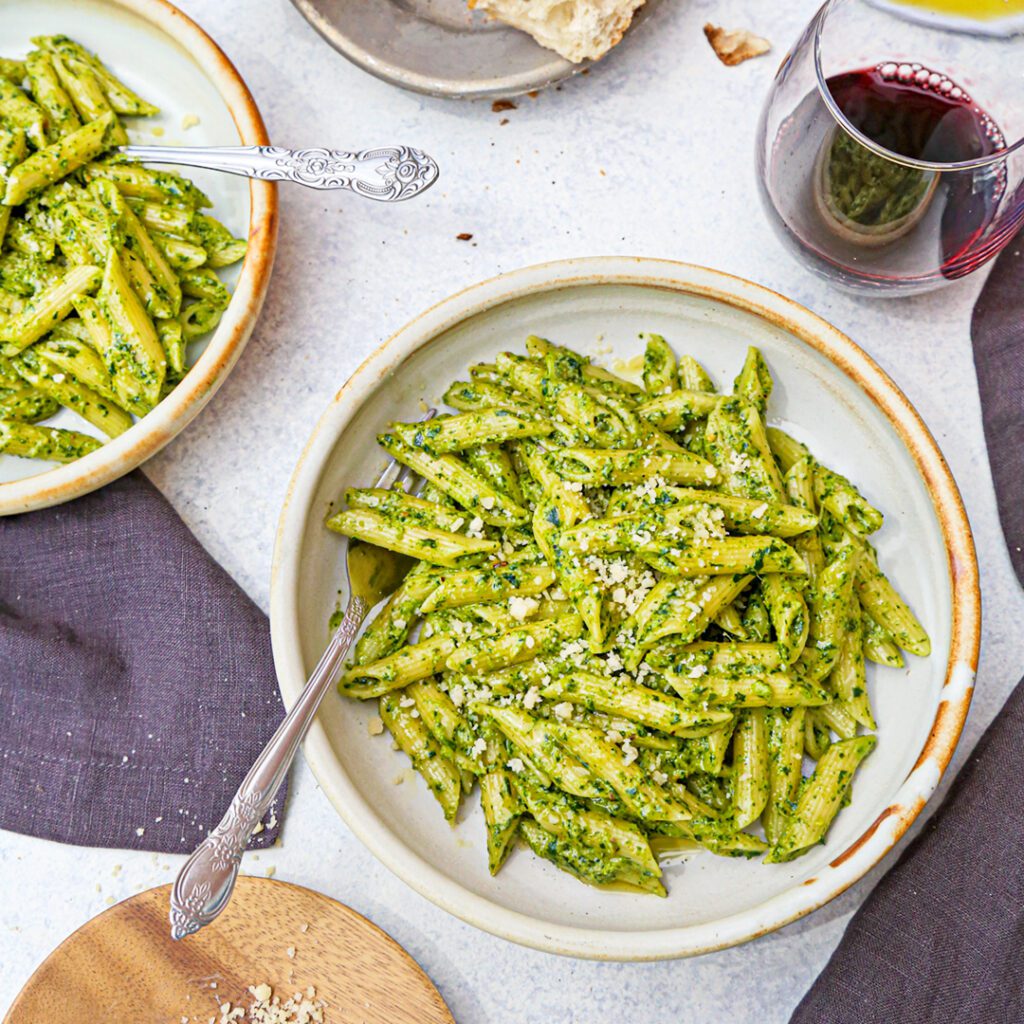
What Can You Use Pesto For? Recipes with Pesto
- Pesto pasta sauce (classic, of course!)
- Grain bowls
- Sandwich spread
- Roasted veggies
- Pesto pizza base
- Dip for crusty bread and vegetables
- Stir into soups or stews
Need a little pesto sauce recipe inspiration? Check out these homemade pesto recipe ideas:
- Basil Pesto
- Pumpkin Seed Pesto
- Dandelion Green Pesto
- Arugula Pesto
- Roasted Jalapeño Pesto
- Spinach Pesto
- Zesty Pesto with Zucchini and Corn
- Kale Stem Pesto
- Tuscan Kale Pesto
- Carrot Top Pesto Pizza
Want to branch out even more? Here are more sauce recipes you can make at home.
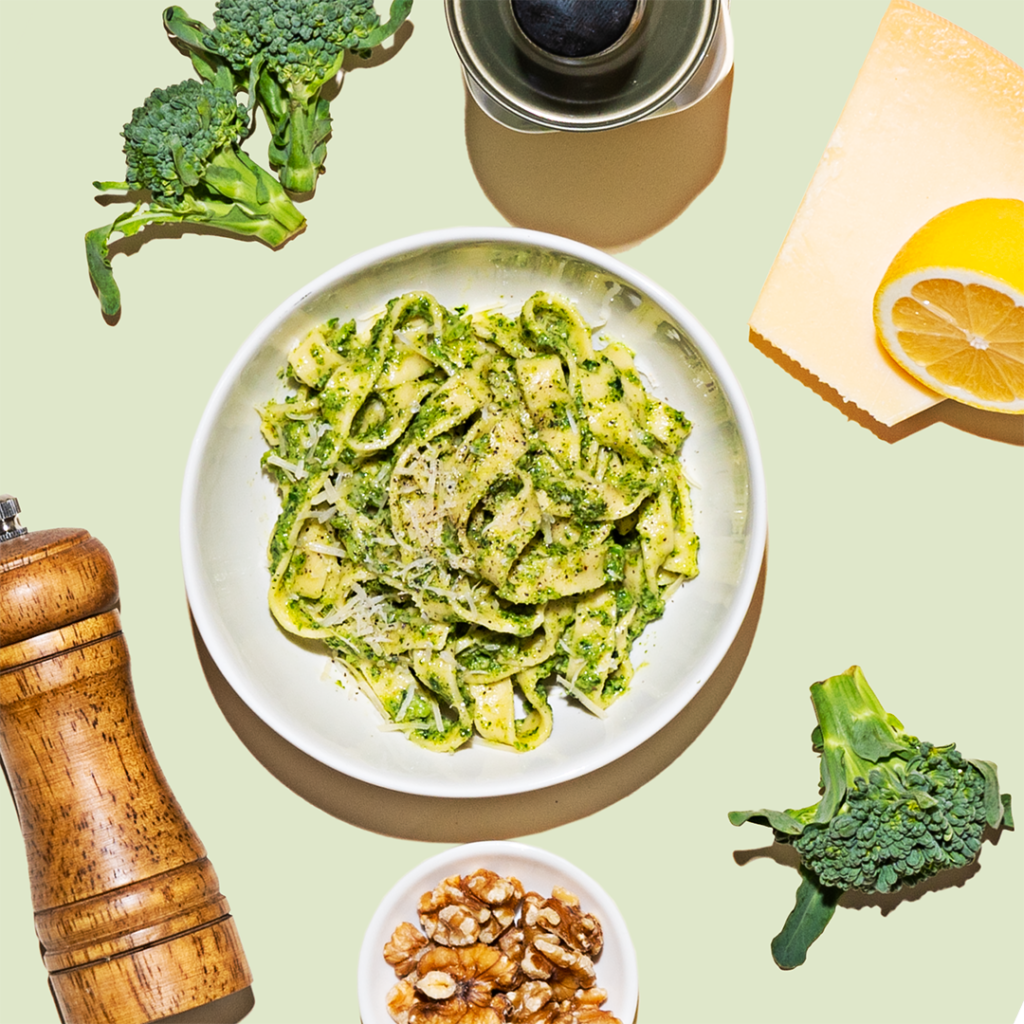

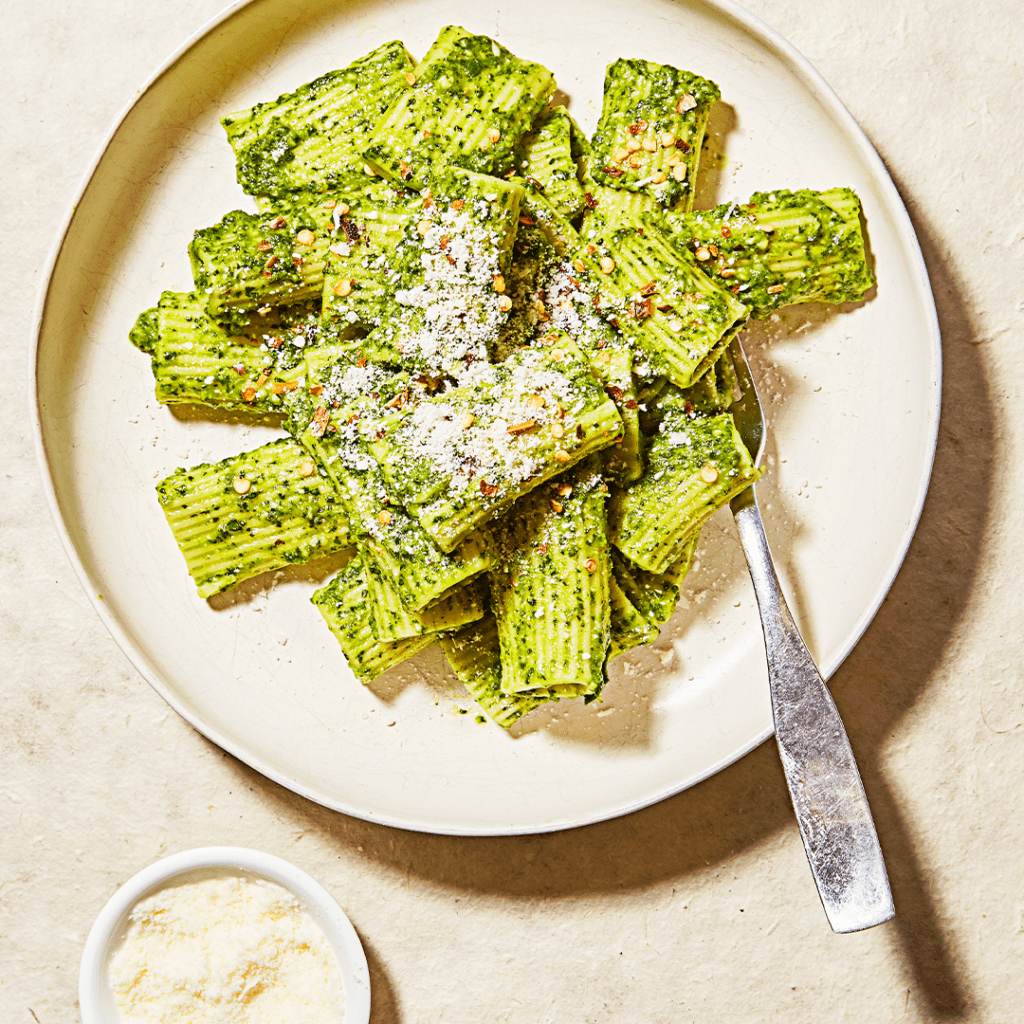
Commonly Asked Pesto Sauce Questions
Pesto might seem simple, but it sparks a lot of good questions—from nutrition to troubleshooting your sauce. Here are a few quick answers to the ones we hear most often:
Is pesto good for you?
Yes—pesto can absolutely be a nutritious addition to your meals. Pestos are made with wholesome ingredients like olive oil, nuts or seeds, herbs, and often cheese. These components bring healthy fats, antioxidants, and essential nutrients like vitamin K, vitamin E, and calcium. Plus, when you use greens like kale or spinach or go dairy-free, you can tailor it to fit your dietary needs while keeping it flavorful and fresh.
Is pesto healthy?
Pesto is naturally nutrient-dense, but like any sauce, its healthfulness depends on the ingredients and how much you use. Traditional pesto made with extra virgin olive oil, basil, pine nuts, and Parmesan offers heart-healthy fats and antioxidants. To make it even lighter or plant-based, you can skip the cheese or use nutritional yeast, and try lower-oil or oil-free versions. It’s a flexible sauce that can easily fit into a balanced, veggie-forward diet.
Why is my pesto bitter and how do I fix it?
If your pesto turns out bitter, it could be due to over-blending or using certain ingredients in high amounts. Extra virgin olive oil can become bitter if blended too long, especially in high-powered blenders. To fix it, try stirring the oil in at the end rather than blending it fully. You can also balance bitterness by adding a touch of acid (like lemon juice or vinegar), or a pinch of sugar or more cheese to round out the flavor.
Can you make pesto without nuts?
Yes! If you have a nut allergy or just don’t have nuts on hand, you can skip them entirely or use seeds like sunflower or pumpkin seeds to make a nut free pesto with a similar texture.
Can you make pesto without cheese?
Absolutely. To make a dairy-free or vegan pesto, simply leave out the Parmesan and use nutritional yeast for that same savory, umami flavor.
How do you prevent pesto from turning brown?
Oxidation can cause pesto to darken. To slow this down, press a piece of plastic wrap directly onto the surface, top the pesto with a thin layer of olive oil, and store it in an airtight container.
How long does homemade pesto last?
Homemade pesto typically lasts 5–7 days in the fridge. If you want it to last longer, freeze it in small portions like ice cube trays and use it as needed.
Why is my pesto too thick/thin?
- If your pesto is too thick, add a splash of olive oil or a little water to loosen it.
- If it’s too thin, blend in more nuts, cheese, or greens to thicken it up.
The Bottom Line on Pesto Sauce
Pesto is endlessly customizable, quick to make, and a great way to reduce food waste. Whether you’re using carrot tops or classic basil, it’s the perfect sauce to whip up on the fly and freeze for later.
Stock up on fresh herbs, nuts, and cheese at Misfits Market and try your own twist on pesto this week.
Don’t feel like making your own pesto? You can find the best store-bought pesto at Misfits Market:
